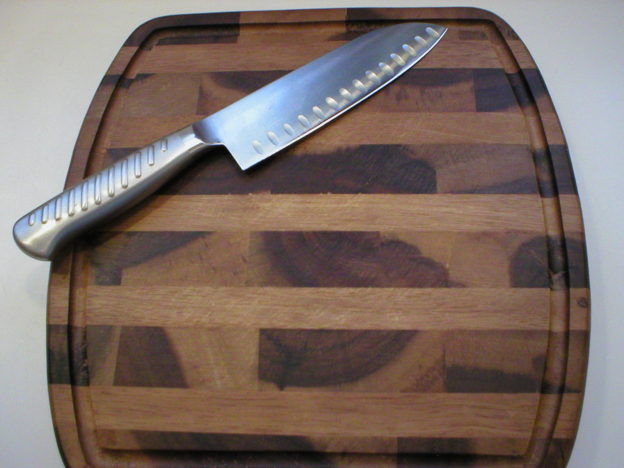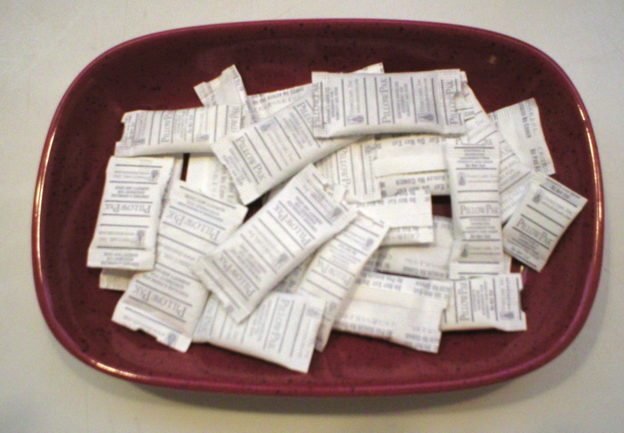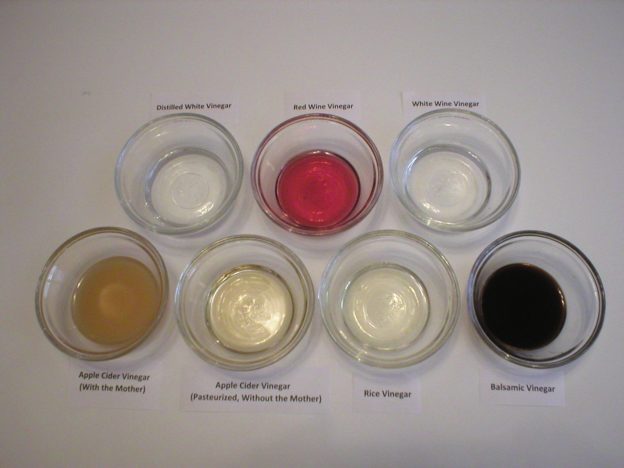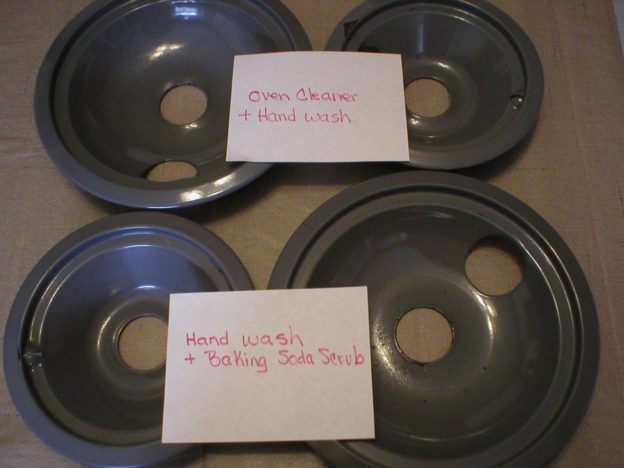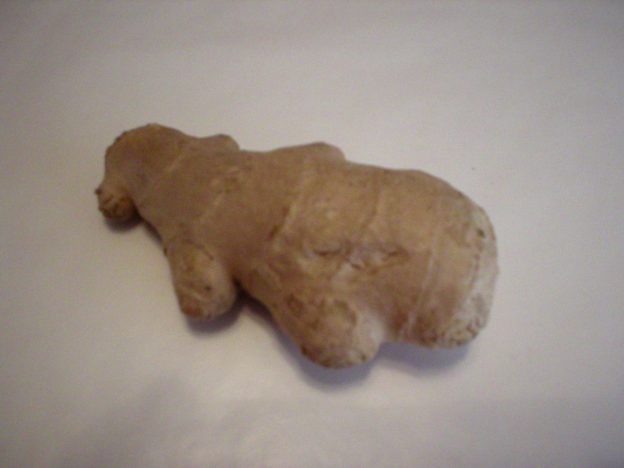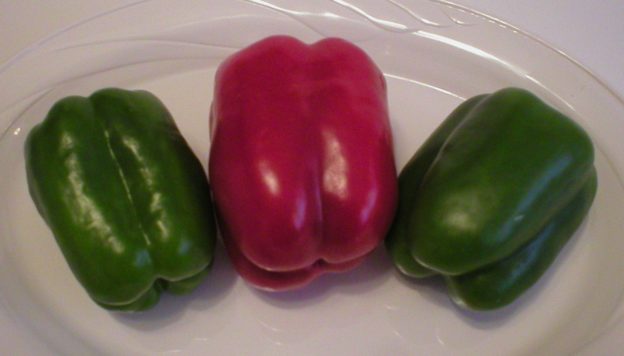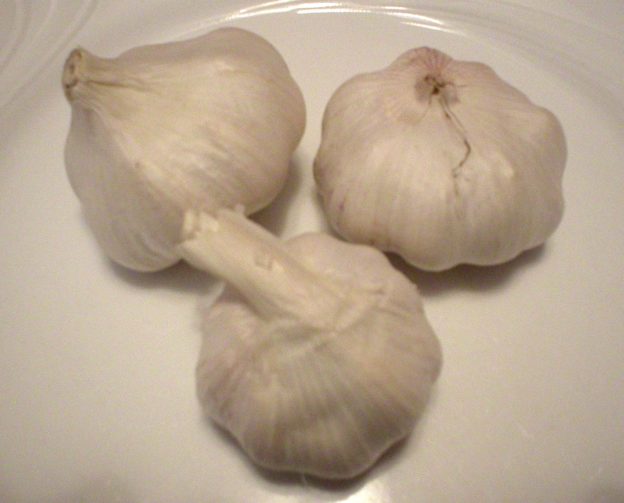Cutting boards come in different sizes, shapes, thicknesses, and materials including wood, plastic, bamboo, stone, glass, and more. Most of us have them in our kitchen equipment, and we use them on a regular basis. But cleaning them can be a bit confusing because the different materials can require different treatments. To complicate matters, the type of food we use on them (from raw meats to fresh vegetables and fruits, to baked breads) also makes a difference on how they should be treated.
First, one important rule-of-thumb when using cutting boards is to have several of them, with one being reserved only for use with raw meats, seafood, and poultry. Raw animal foods carry their own risks for specific food-borne illnesses that can create serious concerns if not handled properly during food preparation. Reserving a board only for such uses can help to avoid potential cross-contamination of pathogens that can lead to serious disease.
The following information will hopefully help you out with how to choose the right cutting boards for your needs, and regularly clean and maintain the boards for safe use in food preparation.
Wood Cutting Boards
Wooden cutting boards are a favored piece of kitchen equipment for most chefs, both professional and casual alike. Yet, they do require some specific care to maintain them over the years.
Pros: It has been proven by research that wood boards retain less bacteria than plastic boards, especially those with a lot of knife marks. Wood boards can be sanded and resurfaced if necessary. Also, they are usually heavy and don’t slide around easily, which can be extremely hazardous. It has been proven that wooden boards are THE BEST surface for maintaining a sharp knife edge. Also, they come in a variety of sizes, shapes and thicknesses.
Cons: They require more routine maintenance than other types of boards (i.e. waxing and oiling). They cannot be soaked for long periods of time. They cannot be put in the dishwasher.
Routine cleaning: Wooden cutting boards should NOT be placed in the dishwasher. The exposure to prolonged heat and water can cause the board to warp and possibly crack. Cracks in wooden cutting boards will tend to harbor microbes that can feed on trapped food particles. This is NOT what you want to happen to your cherished wooden cutting board!
Routine cleaning of your wooden cutting board, after using it to cut breads, fruits and vegetables can be done simply by hand washing it in hot, soapy water with as much manual scrubbing action as is needed to get it clean. Using a scrub brush will help to make this job faster and easier. Rinse it well, pat it dry, then stand it up to air dry completely before putting it away.
When using your wood board for high-risk foods such as raw meat, fish, and poultry, it should be immediately hand-washed in hot soapy water, then sanitized. Dry the board, then allow it to air dry before putting it away.
Sanitizing your wooden cutting board: Research has shown that wooden cutting boards harbor fewer microbes than do plastic cutting boards. Nevertheless, if you have used your wood board for cutting raw animal foods (meats, poultry, fish), sanitizing it after it is hand-washed is important to kill any remaining pathogens after it was washed. This should be done EACH time the board is used for raw animal foods, especially if that same board will be used for cutting fruits and/or vegetables that are to be eaten raw (this practice is not recommended). There are some options (listed below) on how to sanitize your board.
If your wooden cutting board is not being used for raw animal products, you can get by with sanitizing it less often than when using it for raw animal foods. According to the results of a study published in the Journal of Applied Microbiology (August 2015), traditional detergent-based household methods of cleaning will usually sufficiently clean cutting boards used in the preparation of foods that are not high risk (such as raw animal foods) or when not being used for immune-compromised individuals. Ideally for ultimate food safety, cutting boards should be sanitized after each use. However, when no one being fed is immune compromised or when only low-risk foods are being prepared, sanitizing it less often should suffice.
To reduce the risk of cross-contamination if using a cutting board for high-risk foods such as raw meat, fish, and poultry, it is suggested that we have different cutting boards for high-risk foods than for low-risk foods (fresh vegetables, fruits and breads). Having different colors, shapes or sizes for different types of food can help to keep the cook from using the wrong cutting board during food preparation.
Bleach: The USDA recommends that we sanitize a board used for cutting raw animal foods in a solution of 1 tablespoon of unscented bleach to 1 gallon of water. First, hand-wash the board in hot, soapy water, and scrub it well. Then apply the bleach solution and allow it to sit for 3 to 5 minutes, rinse well, then dry it with a clean cloth or paper towel. Stand it up for a little while to help ensure it is completely dry before storing it.
A slightly stronger solution, but simpler to mix up was suggested by Global News of Canada. Mix one teaspoon of bleach to three cups of water. Pour that over the washed cutting board and allow it to sit for a few minutes. Rinse it well, then dry the board.
Vinegar: Vinegar is a non-toxic item that most of us keep in our kitchen. After being hand-washed in hot, soapy water, a wood board can be sanitized with a solution of 1 part of white vinegar to 4 parts of water. Allow the solution to remain on the board for a few minutes, then rinse it well, and pat it dry. Allow the board to air dry before storing it.
If you REALLY want to “go for the gusto,” you could also use undiluted white vinegar to sanitize your board. Spray your cutting board with straight white vinegar, allow it to sit for 3 to 5 minutes, rinse it well, pat it dry, then stand it up, and allow it to air dry before putting it away.
Hydrogen Peroxide: As always, wash your board first with hot, soapy water. According to The Food Network, wood cutting boards can be sanitized by pouring 3% hydrogen peroxide (this is the type of hydrogen peroxide commonly found in your local pharmacy) all over the board. Distribute the liquid around the board with a cleaning sponge, and leave it alone for a few minutes as it bubbles, killing any microbes that are left on the board. When finished, rinse well, and wipe it off with a clean cloth or paper towel. Allow it to air dry before storing the board.
To Deodorize a Wooden Cutting Board: There are several suggested ways to deodorize a wood cutting board…
If your board has any lingering odor from some food used on it, sprinkle baking soda on the board, then pour white vinegar onto it. Important! This will create a lot of bubbling, so be sure to do this in a sink! When the bubbling stops, rinse the board well, dry it with a clean cloth or paper towel, and then stand it up to air dry.
Another way to remove odors from a wood board would be to rub the board well with a cut lemon, squeezing the juice as you rub. Allow the juice to sit on the board for a few minutes, then rinse it well and dry the board.
Some people remove stains and odors from a wood cutting board by sprinkling it with coarse salt, then rubbing it with a cut lemon, squeezing to remove the juice as they rub. When finished, rinse the board well and dry the board. Allow it to air dry before putting it away.
Spritzing the board with white vinegar after use can help to avoid the development of odors in your board.
Protect the Wood: Oiling wooden boards helps to maintain their surface and keeps them from drying out, which could cause them to crack. This also helps to prevent liquids from food and microbes from penetrating the board, helping to keep it clean and germ-free. The goal is to penetrate the wood and saturate the wood fibers with board oil.
All wooden cutting boards should be oiled periodically by rubbing them with food-safe (this is critical!) mineral oil (or an alternative oil of choice). This oil can be found in most local pharmacies. Note, that mineral oil is the oil of choice by most professional chefs for this application, since it will not go rancid over time. Do not use vegetable oils for this purpose. They will spoil, causing the board to smell bad and possibly transmit rancid oils into your food.
If you prefer to use a food-derived oil, you could use traditional coconut oil (which is solid at room temperature) or fractionated coconut oil (which is liquid at room temperature). Just note that some say traditional coconut oil may go rancid over an extended period of time, whereas fractionated coconut oil should not.
First, be sure your board is as clean (and dry) as possible. Then, simply rub a generous amount of your preferred oil very well into the DRY board with a clean, dry cloth, or new paint brush dedicated to this purpose (do not use your hands as you might get a splinter!). Doing this will help to prevent cracks in the board, keeping it from harboring microbes in hard-to-reach areas. After being oiled, stand your cutting board up on its side on a clean, dry towel, or place it on a wire rack. Allow the oil to soak in as long as possible before wiping any excess off. Try to allow the oil to soak in for at least a few hours (up to 24 hours) before wiping away the excess. A simple way to do this would be to wipe the board with oil in the evening. Allow it to sit overnight. Wipe any excess oil off in the morning, and allow it to air dry until it is not tacky or sticky feeling. Then use the board as needed.
How often you should oil your board depends upon how often you use it. Wooden boards used daily may benefit from being oiled once a month. Those not used very often could be oiled once or twice a year. If your board feels “dry to the touch” it’s time to oil it. If nothing else, let that tip be your guide.
Spoon (Wood) Butter (Cutting Board Creams or Waxes): You can also condition your board with “spoon butter” or “wood butter” which is a mixture of beeswax, food-grade mineral oil, and sometimes other waxes. These same creams may also be referred to as cutting board creams or waxes. They can be purchased in stores (local and online) that carry cutting boards and kitchen supplies.
While board oil penetrates the wood, board creams or waxes coat the surface of the board, protecting it from liquids and stains. Board creams or waxes also help to protect sanitation, as they fill in knife marks, where bacteria can live, even after the board is cleaned. When used in conjunction, both board oil and cream or wax can protect your wooden cutting board from inside to out, helping it to serve you well for years.
To use board creams or waxes, rub a generous amount of the mixture into your board and allow it to sit for at least several hours, up to 24 hours (overnight is really convenient). Then buff excess off your board with a clean, dry cloth. Allow it to air dry until it no longer feels tacky or sticky, then use your board as normal. Use it freely on any wood or bamboo bowl, board, or kitchen utensil.
Plastic Cutting Boards
Plastic cutting boards are enjoyed by many. They are usually made from polyethylene and can be washed at the sink, soaked for indefinite periods of time, and placed in the dishwasher. They are relatively good on knife blades, but not as good as wood boards in that respect.
Pros: One benefit of plastic boards is that they come in different colors. The assorted colors can help you isolate their use for specific types of foods, such as one specifically for raw meats, while another is specifically for raw vegetables, and yet another is dedicated only to cutting breads. Such a system is excellent to help prevent cross-contamination of bacteria which can be deadly.
Plastic boards can be safely soaked for long periods of time and can also be placed in the dishwasher.
Plastic boards are relatively good for maintaining the sharp edge of your knife, since they give slightly in the cutting process.
Cons: Over time, plastic boards can get a lot of knife gouges in them which are permanent. Such furrows allow places for bacteria to harbor, even after the board has been washed. When a plastic board becomes “fuzzy” or has a lot of knife furrows in it, it’s time to replace it.
Sanitizing Your Board: Always start by first washing your board in hot soapy water, or running it through a dishwashing cycle. If your board has been used for low-risk foods such as breads or fresh fruits and vegetables, occasionally letting your plastic board soak in a diluted bleach solution (1 tablespoon of unscented bleach to 1 gallon of water) for 5 minutes can adequately sanitize the board. If the board has been used for cutting raw meat, seafood, or poultry, it’s important to sanitize it after EACH such use.
Placing it in the dishwasher after each use is also a good way to help keep your plastic board clean and fresh.
No matter how your board has been washed or sanitized, be sure your board is completely dry before storing it. Any moisture left on the board can allow bacteria to remain viable.
Bamboo Cutting Boards
Bamboo cutting boards have increased in popularity in recent years. They require less maintenance than traditional wood cutting boards and are harder and less porous than hardwoods.
Pros: Bamboo cutting boards require less maintenance than traditional wood boards. Since they do not retain water as traditional wood boards can, they are less likely to warp, crack, or harbor bacteria. Bamboo absorbs very little moisture and resists scarring from knives, so they are more resistant to bacteria than traditional wood boards. They make lovely serving trays for cheese, crackers, and other appetizers or finger foods.
Because bamboo is harder than traditional wood, it resists scarring from knife use, as does traditional wood. This makes it easier to clean and less likely to retain bacteria after use.
The hardness and density of bamboo makes it less likely to stain when preparing some foods like meats or tomatoes.
Bamboo is a sustainable crop, so less damage is done to the environment when bamboo is harvested than trees. Bamboo is a grass and one of the fastest growing plants on the planet! It is one of the simpler and more economically grown plants available. Also, they are relatively inexpensive.
Cons: Do not put bamboo cutting boards in the dishwasher, which might cause the board to warp and/or crack. Also, do not soak your bamboo board.
Read the label carefully when buying a bamboo cutting board. Some bamboo products are processed with formaldehyde and glues that can leach into foods over time. Choose only boards made with non-toxic treatments or organic practices.
Since bamboo is harder than traditional wood boards, they are not as forgiving to knife blades as wood boards. Hence, your knife may not last as long when using a bamboo cutting board, especially if it is a cheaper knife made with a softer metal than a higher-priced knife.
Bamboo boards should not be used as hot plates or trivets for hot items, since this might burn the board.
Pre-conditioning your bamboo board: If your bamboo board was not pre-conditioned by the manufacturer, you’ll need to do that before you use it. First, wash it well in hot soapy water, then dry it and allow it to completely air dry. Then prime it with food grade mineral oil. Apply a generous amount of oil and let it sit for a few hours to overnight. Wipe off any remaining oil in the morning with a clean, dry cloth or paper towel until it does not feel damp or sticky, and it will be ready to use. Do this about once a month to maintain your board and extend its life, or repeat this process any time your board looks dry.
Spoon (Wood) Butter: See this topic under the Wood board section. The same information applies to bamboo boards.
Washing, Sanitizing, and Maintaining Your Bamboo Cutting Board: Clean bamboo cutting boards with hot soapy water; and sanitize if it each time it is used for cutting raw meats, seafood, or poultry. Dry it thoroughly before putting it away. Do not put it in the dishwasher.
To sanitize your bamboo board, scrub it well with a mixture of 1 tablespoon bleach to 1 gallon of water (or 1 teaspoon of bleach to 1 quart of water…which is slightly stronger than the 1 gallon mixture). Allow it to sit for a few minutes, then rinse the board well afterwards, and wipe it dry. Allow it to air dry completely before putting it away.
Glass Boards
Glass cutting boards can be beautiful decorative elements in any kitchen. They make a nice platform or tray for items that you want to protect from other surfaces. Although they can be easy to clean and maintain, most professionals do not use glass boards for reasons stated below.
Pros: Glass boards are easy to clean since they are nonporous. Germs can’t penetrate them. They may be placed in the dishwasher.
Cons: Since glass boards are hard and have no “give” whatsoever, they can damage knife blades over time. For this reason, most authorities do not recommend glass cutting boards for cutting purposes.
Sanitizing Your Board: Simply wash your glass board at the sink or in the dishwasher. An occasional sanitizing with a bleach or vinegar solution is always advisable (see how, under “Wood” section).
Stone/Marble/Granite Boards
Stone boards are excellent when used for rolling pastry. They are naturally cool to the touch which helps to keep the butter or other fat in the pastry from melting during the rolling process. Doughs also tend to stick less to stone, marble, or granite when being rolled out. They can also be used to place pots on to keep them from scratching a counter top. But since they are extremely hard, they can dull knife blades over time when used to cut foods, so they are generally not recommended for use as a traditional cutting board.
Pros: There is no chance these boards will warp. They can be used as a hot pad or trivet. They can be very attractive and add a nice element to your kitchen décor. They are simple to clean and sanitize and do not need special treatment to maintain.
Cons: They can dull your knife blade when used as a true cutting board. If not careful, they can chip or crack if mishandled or bumped.
When to Replace Your Cutting Board
Replace your cutting board when it shows a lot of wear, such as extensive knife marks. Deep groves in any board can allow bacteria to live on the board, even after being washed.
Also replace your board if it has warped. Using a warped board will not be stable on the counter or table, which can be very hazardous when using a sharp knife. The cost of a new board is well worth it when compared to having a serious knife injury.
If you are using a wood or bamboo board and the seams are starting to separate, it’s time to replace the board. It may be unstable to use, making working with a sharp knife potentially dangerous. Also, deep groves may catch your knife making cutting action erratic and possibly invite an injury. Furthermore, deep groves or cracks can also harbor bacteria. So, needless to say, a board that is separating is not worth keeping! When dealing with food and food-related equipment…”When in doubt, throw it out!”
About Judi
Julia W. Klee (Judi) began her journey enjoying “all things food” in elementary school when she started preparing meals for her family. That love of food blossomed into a quest to learn more and more about health and wellness as related to nutrition. She went on to earn a BS Degree in Food and Nutrition, then an MS Degree in Nutrition. She has taught nutrition and related courses at the college level to pre-nursing and exercise science students. Her hunger to learn didn’t stop upon graduation from college. She continues to research on a regular basis about nutrition as it relates to health. Her hope is to help as many people as possible to enjoy foods that promote health and wellness.
https://www.quora.com/What-kitchen-wood-cutting-boards-are-dishwasher-safe
https://www.cuttingboard.com/blog/how-to-properly-clean-your-wood-cutting-board/
https://www.cuttingboard.com/how-to-oil-and-maintain-a-cutting-board/
https://www.eatright.org/homefoodsafety/four-steps/separate/cutting-board-safety
https://www.canr.msu.edu/news/cutting_boards_and_food_safety_1
https://www.cookinglight.com/cooking-101/techniques/how-to-clean-wooden-cutting-board
https://globalnews.ca/news/4043583/clean-disinfect-chopping-board/
https://www.ncbi.nlm.nih.gov/pubmed/26060060
https://housewifehowtos.com/clean/how-to-clean-your-cutting-board/
https://www.huffpost.com/entry/cutting-boards-to-avoid_n_1335613
https://www.consumerreports.org/food-safety/are-plastic-cutting-boards-better-than-wood/
https://www.cuttingboard.com/blog/top-five-benefits-of-a-bamboo-cutting-board/
https://www.thekitchn.com/whats-the-best-kind-of-cutting-board-plastic-wood-or-bamboo-51821

